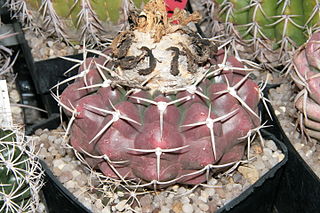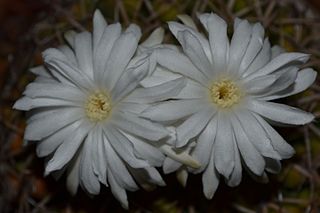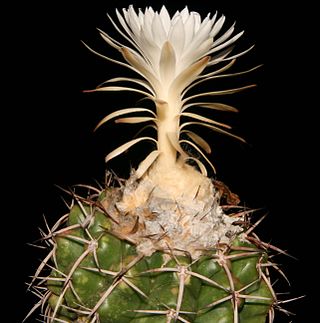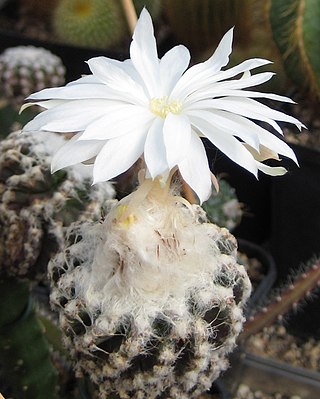
Royal Botanic Gardens, Kew is a non-departmental public body in the United Kingdom sponsored by the Department for Environment, Food and Rural Affairs. An internationally important botanical research and education institution, it employs 1,100 staff. Its board of trustees is chaired by Dame Amelia Fawcett.

The curry tree or Bergera koenigii, is a tropical and sub-tropical tree in the family Rutaceae, native to Asia. The plant is also sometimes called sweet neem, though M. koenigii is in a different family to neem, Azadirachta indica, which is in the related family Meliaceae.

Nathaniel Lord Britton was an American botanist and taxonomist who co-founded the New York Botanical Garden in the Bronx, New York.

Disocactus is a genus of epiphytic cacti in the tribe Hylocereeae found in Central America, the Caribbean and northern South America. It should not be confused with Discocactus, which is a different genus.

Discocactus is a genus of tropical cacti. Discocactus plants are endemic to southern Brazil, eastern Bolivia, and northern Paraguay. These species are in the risk of extinction in the wild.

The Cactoideae are the largest subfamily of the cactus family, Cactaceae, and are widely distributed throughout the Americas. Cactaceae is the 5th most endangered plant or animal family evaluated globally by the International Union for Conservation of Nature. Around 80% of cactus species belong to this subfamily. The genera of the Cactoideae are characterized by microscopic foliage leaves. All photosynthesis occurs in shoot cortex cells covered by a persistent epidermis and stomata. Another important characteristic of this subfamily is ribbed stems, which enable the inner cortex to expand radially without breaking the shoot surface to absorb large quantities of water.

Pilosocereus catingicola is a flowering plant in the family Cactaceae that is endemic in northeastern Brazilian states of Rio Grande do Norte, Pernambuco, Alagoas, Sergipe, Paraíba, Bahia.

Discocactus bahiensis is a species of Discocactus from Brazil.

Discocactus boliviensis is a species of Discocactus found in Bolivia.

Discocactus diersianus is a species of Discocactus found in Brazil.

Discocactus fariae-peresii is a species of Discocactus found in Brazil.

Discocactus ferricola is a species of Discocactus found in Bolivia and Brazil.

Discocactus hartmannii is a species of Discocactus found in Paraguay to Brazil

Discocactus zehntneri is a species of Discocactus found in Brazil.

Discocactus heptacanthus is a species of Discocactus found in Brazil, Bolivia, and Paraguay.

Discocactus placentiformis is a species of Discocactus found in Brazil.

Discocactus horstii is a species of Discocactus found in Brazil.
Discocactus buenekeri is a species of Discocactus found in Brazil.
Discocactus petr-halfarii is a species of Discocactus found in Brazil.
Discocactus pseudoinsignis is a species of Discocactus found in Brazil.

















